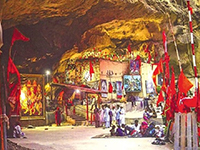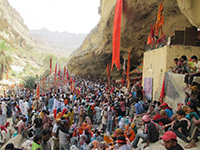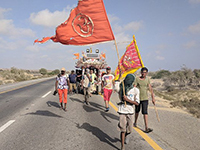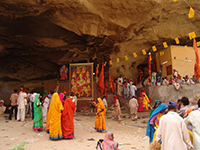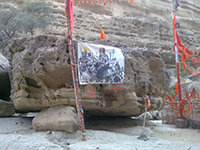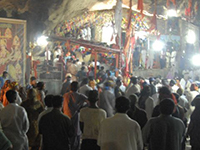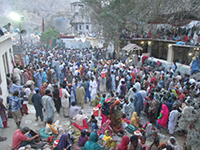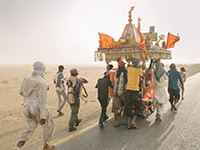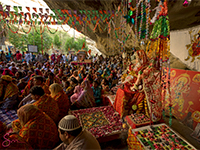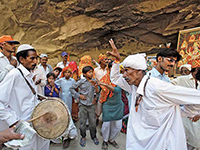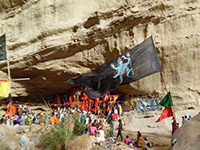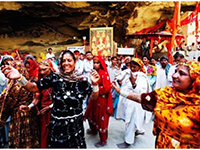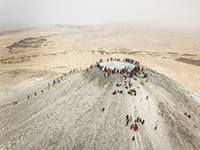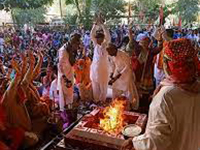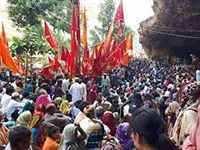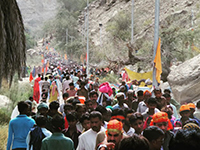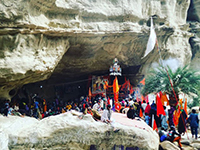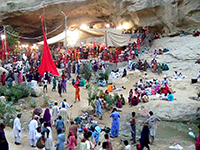HINGLAJ YATRA : THE ANNUAL PILIGRIMAGE
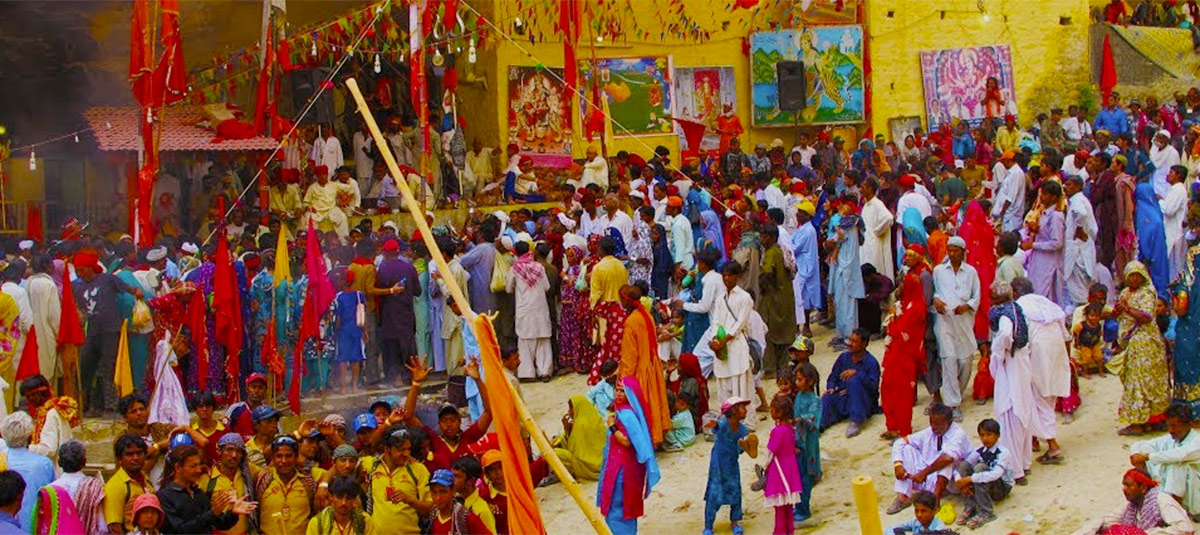
-
More than 250,000 Pilgrims from all over Pakistan and even India visit the Hinglaj Mata temple every spring.
-
They hold traditional red banners and wear red-gold decorative head-scarves, which are associated with the sanctuary of Hinglaj Mata.
-
Once pilgrims arrive in Hinglaj they complete a series of rituals, like climbing the Chandragup and Khandewari mud volcanoes. Devotees throw coconuts into the craters in the Chandragup mud volcano to make wishes and thank the gods for answering their prayers. Pilgrims to the volcano believe that the Shri Hinglaj Mata temple may only be entered only after paying homage to Baba Chandrakup.
-
Pilgrims then take a ritual bath in the sacred Hingol River before finally approaching the shrine marking the goddess’s resting place.
-
The major ceremony in the pilgrimage occurs on the third day, when the priests of the shrine recite mantras to invoke the gods to accept the offerings brought by the pilgrims, and bless them. Offerings made by the pilgrims to the deity primarily consist of three coconuts.While some remain in Hinglaj for all four days, others make a short day trip.
-
At the volcano's peak, the pilgrims must introduce themselves with their full name and place of origin and then call out their sins in front of the group. According to the bubbling of the mud and the reaction of the wind, the chaṛīdār is able to tell if the pilgrim's sins are forgiven.
-
Historically few could make the taxing journey to Hinglaj—a grueling trek across more than 160 miles of isolated desert to the temple. But in recent years, new infrastructure has allowed an unprecedented number of pilgrims to enter the site, altering centuries-old rituals.What was once a journey of more than 150 kilometres (93 mi) by foot through the desert from the nearest road, is now made easy by the Makran Coastal Highway connecting Karachi with Gwadar. Hinglaj is 328 kms and nearly 4 hours drive from Karachi on the Makran Coastal Highway.
-
The pilgrimage serves as meeting point for places and doing community activity like gathering funds for construction of a Hindu temple.Hundreds of volunteers help in the organization. Diesel generators are installed. Vast community kitchens are set up to cook food prepared with tonnes of food stuff such as wheat floor, rice, lentils, and vegetables supplied by local people to feed the pilgrims. Three meals are prepared. Temporary bathroom facilities and camps are installed.
-
The Hinglaj Sheva Mandali is the temple committee established to promote an annual pilgrimage to the shrine. It was created on January 5, 1986 and continues to be the main organization serving the Hinglaj Mata temple and its pilgrims.
